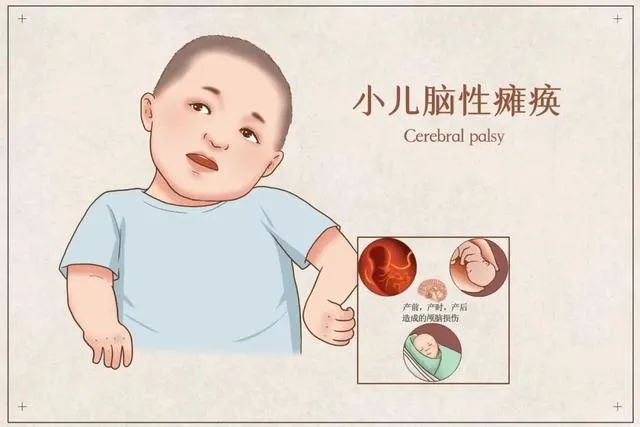Cerebral Palsy
Etiology
The causes of CP are complex, including genetic and acquired factors. The latter encompasses factors before birth, during the perinatal period, and in the neonatal period, with some cases lacking clear causes. Presently, the four significant factors associated with CP are premature birth or low birth weight, perinatal asphyxia or hypoxic-ischemic encephalopathy, neonatal hyperbilirubinemia, and intrauterine infections. Additionally, CP occurrence is related to genetic factors.

Pre-birth factors
Embryo quality at conception
Parental smoking, alcohol abuse, or drug use before and during pregnancy can affect embryo quality.
Maternal health conditions
Factors like infections, poisoning, or exposure to radiation during early pregnancy may result in improper brain cell development.
Perinatal factors
Premature birth
Can lead to various pathological conditions, making children more susceptible to CP.
Birth trauma
Conditions like rapid delivery, vacuum extraction, and forceps delivery can potentially cause intracranial hemorrhage.
Hypoxia
Factors such as prolonged labor, nuchal cord, meconium aspiration, or placental dysfunction can lead to fetal brain hypoxia.
Hyperbilirubinemia
Several causes may result in severe jaundice in newborns, potentially leading to kernicterus.
Neonatal period factors
Various infections, severe neonatal conditions, brain trauma, and intracranial hemorrhages due to neonatal bleeding disorders can cause CP.
Genetic factors
Some CP cases may have a familial history of inherited diseases. If there are cases of epilepsy, CP, or intellectual disabilities in close relatives, the likelihood of CP occurrence increases.
Clinical Manifestation
The clinical manifestations of CP vary among individuals, primarily including:
Motor impairments like abnormal muscle tone, muscle spasms, or flaccidity.
Issues with posture control, making it challenging to maintain balance and control posture.
Coordination difficulties, leading to poor motor coordination, potentially affecting fine hand movements.
Limited motor functions involving activities like walking, crawling, and sitting.
Speech and language impairments; some patients may encounter issues in speech and language development.
Cognitive impairments; although most CP patients have normal intelligence, some may have cognitive issues.
Examination
Neurological assessment: Involves evaluating muscle tone, motor control, and sensory function.
Imaging studies: Brain MRI or CT scans help detect abnormal brain structures.
Electroencephalogram (EEG): Assesses brain electrical activity.
Blood tests: Rule out metabolic diseases and infections as potential causative factors.
Diagnosis
Doctors diagnose CP primarily based on medical history, symptoms, and physical examinations. Additionally, they may request imaging studies like CT or MRI for insights into any structural brain abnormalities, which hold significance in determining CP causes and predicting prognosis. EEG aids in understanding if seizures are present, providing guidance for treatment. Criteria for CP diagnosis include:
Causative factors occurring before birth, at birth, or during the neonatal period.
Central paralysis appearing in infancy without progression throughout the disease course.
Exclusion of progressive diseases (such as genetic metabolic disorders, tumors) causing central paralysis.
Exclusion of transient developmental motor delays in normal children.







